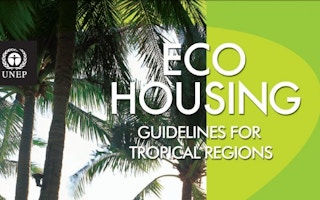Experts on the final day of a green building conference hosted in Singapore said on Friday that the key to successfully green a building - existing or new-built - is an all-rounded approach which considers all factors of a building’s operation.
Deputy chief executive for industry development Lam Siew Wah of Singapore’s Building and Construction Authority (BCA) told participants at a plenary session that issues concerning existing buildings are not just technical, “there are also human issues, business issues.”
Mr Lam highlighted three aspects that he said would need to be further addressed going forward:
Firstly, ways for landlords and tenants to work together, such as green leases and other incentives. Secondly, reducing a building’s energy load; this would include green procurement, or the installation of energy efficient appliances. Finally, there is a need to share best practices and spread awareness, he explained.
Agreeing, Rob Moult, vice-president of service in Asia with Johnson Controls, pointed out: “One needs to capture a whole-building view, rather than just looking at the components.”
Integrated design, he said, must include all key industry players and suppliers, and follow a certain set of steps in order to be truly effective.
His recommendations were:
Firstly, finding ways to reduce the building’s load in terms of energy use, then selecting appropriate energy-efficient equipment. This should be followed by developing a schedule that can minimise unproductive running time for that equipment.
Only then, he said, should distributed energy generation - multiple small-scale on-site power sources - such as solar, geothermal and biomass be added.
Next, the building should be periodically re-evaluated to keep it up to date with the current energy efficiency standards, and systems and equipment should be maintained in good condition.
The human factor then has to be taken into account: operators have to be trained to run the building and its systems in an energy-efficient manner, and tenants or users have to be educated and given incentives for keeping their consumption levels low.
Finally, he added, the building’s performance must be tracked to ensure that it continues to be sustainable over its lifespan.
In implementing these steps, various interested parties must be engaged. The industry, business and finance sectors are particularly important, said Dr Arab Hoballah, chief of sustainable consumption and production with the United Nations Environment Programme.
“We need to find the right mechanism to work with the business sector, because at the end of the day, they are the agents of change,” he said, pointing out that the private sector can demonstrate best practices, while the public sector can lead the way with great effectiveness as it has done in Singapore.
“There is real political will to push Singapore to being a low-carbon city,” he noted of the government’s initiatives here, which are often mirrored by private sector efforts.
Mr Lam, too, cited policies such as the requirement for all public sector buildings with an air-conditioned area greater than 10,000 square metres to get the BCA Green Mark Gold Plus rating by 2020, and major incentive schemes such as the $100 million BCA Green Mark Incentive Scheme, implemented in 2009 as one of the first policies for existing buildings.
However, he added, only $6 million of the fund has been disbursed so far, so there is still “some way to go.”
The gap between public sector push and private sector adoption, suggested Dr Hoballah, is due to a continuing lack of understanding of the importance of sustainability.
“We have seen the potential but are not giving it the right importance,” he said. “Buildings and cities are key to sustainable development. They are essential for the transition to a green economy.”
At the same time, he noted, there is a general mindset that one should not be a first mover in the area of sustainability. “When we talk about sustainable housing, we have a tendency to say: this is for the rich,” a view that UNEP is now trying to rectify with its Sustainable Social Housing Initiative pilot projects in Bangkok and Sao Paulo.
However, things are changing for the better, and rapidly, noted Mr Moult, who cited the Johnson Controls’ 2011 Energy Efficiency Indicator Survey. Commenting on the results, Mr Moult pointed out that since 2010, the number of companies agreeing that energy management is extremely or very important has gone up by 10 per cent, to 70 per cent in just one year.
During the same time frame, 37 per cent have at least one green-certified building, up from 19 per cent, and an additional 32 per cent have incorporated green building elements without getting the certification.
If the figures are indicative of a growing trend, it may also be a sign that the all-rounded approach advocated by Mr Moult, with its implications of higher effectiveness and lower cost, are taking hold.
As Dr Hoballah put it: “(Implementing sustainability) can be done now, with existing technology and existing knowledge, at a very cheap investment.”
Eco-Business.com’s coverage of the International Green Building Conference 2011 is brought to you by City Developments Limited (CDL).















